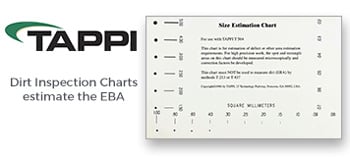Troubleshooting and optimization of steam jet ejector water chillers, Solutions!, Online Exclusives, June 2004
TROUBLESHOOTING AND OPTIMIZATION OF STEAM JET EJECTOR WATER CHILLERS
By Guy Levy,Croll-Reynolds Company, Inc.
As established facilities seek to improve and become more efficient, they should examine and possibly upgrade their steam jet chillers to achieve optimum effectiveness.
For large continuous flows of chilled water for a process plant, nothing is simpler or more reliable than steam jet ejector chillers or refrigeration plants. They have no moving parts, require little maintenance and can handle huge water flows—up to 6500 gpm (1500 cubic meters per hour) in one manufacturer’s experience—bringing them down to 35º F (-2º C), or below if, for example, the water is saline. As established facilities seek to improve and become more efficient, they should examine and possibly upgrade their steam jet chillers to achieve optimum effectiveness.
In steam jet vacuum refrigeration, water or an aqueous solution or suspension literally cools itself in the proper vacuum. No other refrigerant is required and this advantage, along with total absence of moving parts, noise and vibration, justifies the selection of vacuum refrigeration for many applications where mechanical refrigeration is currently being used. Steam jet vacuum refrigeration is common in paper mills, chemical and petrochemical process plants, and for industrial and commercial air conditioning where steam is available (in a large hospital, for example). In the paper industry, it is used to chill massive quantities of water for bleaching operations.
Flash cooling from high or intermediate processing temperatures to or near ambient temperatures is becoming more and more important in the chemical and miscellaneous process industries. Vacuum cooling can be continuous and instantaneous compared to the many hours otherwise required for cooling in storage or for the very expensive heat exchange equipment required for other continuous cooling processes.
While vacuum cooling effects big savings in heat transfer equipment on viscous solutions, it may affect even greater savings on solutions which are highly corrosive, such as phosphoric acid in fertilizer plants. The material to be cooled can flow continuously through a rubber-lined flash chamber with no heat transfer surface required.
In many cooling processes certain solids are precipitated from solution. If conventional heat exchangers are used, the surface becomes quickly covered and ineffective. In vacuum cooling, solids can build up to a thickness of an inch or more and be cleaned at rare intervals. Actually, they usually do not settle on the surface of the container. The cooling is done on the surface of the liquid in contact with the vacuum and the solids are more likely to remain in suspension.
Often the vapor liberated in flash cooling can be used to heat incoming process water or other liquids. Such an arrangement is often referred to as a "flash type heat exchanger". In some cases the arrangement can be more than justified by heat recovery alone, providing vacuum cooling at zero cost.
Principles of operation
The steam jet chiller works on the simple principle of evaporative cooling. As a small amount of water is evaporated, the remaining body of water is cooled according to simple thermodynamic principles. To cool water quickly to cold temperatures the evaporation must be performed under vacuum. The evaporation is generally completed in a number of stages for reasons of efficiency.
Typical large-scale steam jet refrigeration plant
A typical steam jet refrigeration plant employs several "booster" ejectors. The boosters compress flash steam and any dissolved noncondensables and discharge them to a main condenser, using positive pressure motive steam to evaporate a quantity of water under vacuum. The first stage booster cools the water flow in this way up to an intermittent temperature and then the second stage booster takes over cooling until the final temperature is reached. Both boosters discharge into a condenser, where the motive steam plus evaporated water vapor is condensed. The boosters typically operate at vacuum levels between 6 torr (8 mbar) and 15 torr (20 mbar). In order for the boosters to pull such vacuums, their discharge (into the condenser above) must also be at a vacuum. A two-stage steam jet vacuum set (often called an air-pump) is commonly used to hold the vacuum at the discharge.
Troubleshooting
A steam jet ejector refrigeration system is remarkably simple and needs little maintenance. When it does malfunction, the solution to the problem is usually found in the booster ejectors.
Over time, many service conditions can change; for example, more demand on the cooling-water supply or increases in average temperature, especially in summer; an older boiler, which has lost efficiency, been derated, or even replaced; different process demands on the steam supply; more air leakage into the system. All these factors will gradually bring down the ejector system’s performance.
When there is a problem or noticeable change in performance, engineers today may need assistance. Fortunately, troubleshooting can be quite simple if approached systematically.
Checklist 1: Steam supply
- Steam lines from the utility side should be well-insulated to prevent condensation.
- A separator used to help ensure dry steam should be trapped and insulated.
- If steam quality is questionable, a calorimeter should be used.
- Steam pressure should be at design, which is usually the maximum available.
Steam quality is the most important factor—and also the most misunderstood. Wet steam alters performance. It wears out the system faster, changing critical dimensions on nozzles, venturis, etc. No ejector-based system should ever be operated with steam quality below 97%; that is, with more than 3% water in the steam.
It is not enough to be sure steam leaves the boiler superheated. Long or uninsulated lines may result in loss of heat and formation of condensation. Sometimes wet or low-pressure steam develops over the years as plant operating changes require rerouting of steam piping. The most direct solution is the separator. No vacuum system should be without one. Insulation of lines and separators, in addition to saving energy, ensures design performance.
High pressure steam can also be a problem, since running an ejector at pressure substantially above design decreases capacity because of choking in the venturi. It is safe up to about 25%; above that, steam to the ejector should be throttled back and desuperheated.
Checklist 2: Water flow, temperature
- Water pressure should be within limits.
- Correct water flow is important.
- Water temperature should be at or below design level.
Most chiller ejector systems rely on condensers between stages to reduce the load to be compressed. Since the condensers operate under vacuum, water pressure at the inlet is not critical, but some pressure differential is needed for controlling water flow in barometric condensers and overcoming pressure drop through surface condensers. Water pressure should remain fairly constant, since wide fluctuation will cause changes in water flow and condenser operating pressures.
Water flow must be adequate for proper cooling. Conversely, intercoolers can’t be fed too much cooling water or flooding will affect operation of the ejector’s next stage. Usually a 15-30º F temperature rise is acceptable.
Since water temperature is critical, care should be taken to ensure proper flow. A temperature rise may require an increase in water or motive-steam pressure. If the rise is substantial, modifications to the system may be necessary and the manufacturer should be notified.
Checklist 3: External causes of trouble
- Low or, occasionally, excessively high steam pressure.
- Wet steam.
- Change in cooling-water temperature.
- Insufficient cooling-water flow.
- Excessive air leakage.
Checklist 4: Internal trouble signs
- Eroded or corroded parts, especially ejector nozzles and diffusers and intercondenser water nozzles.
- Clogged nozzles, diffusers, and strainers.
- Clogged or fouled condenser tubes.
- Clogged barometric legs.
- Leaks between the steam chest and nozzle.
- Cracked or worn parts.
Checklist 5: Spares to keep on hand
- One steam nozzle for every ejector-stage size.
- A diffuser for the final two stages is recommended.
If continuity of service is critical to the process, always keep a spare steam nozzle in stock for each stage of the system. Spare diffusers are also worthwhile to stock, especially for smaller systems. While it is theoretically possible for the plant engineer to recondition these parts, the practice is not recommended because critical dimensions may be altered. Since nozzles are inexpensive, they easily may be discarded and replaced.
Optimizing a steam jet chiller
After many years of operation, a plant should examine the actual requirement of chilled water as well as the required final temperature. The possibility exists that demand has changed since the plant was originally designed, with more or less use of chilled water. In both cases it may be possible to retrofit an existing chiller with boosters sized for the new evaporation requirement. The boosters would fit the existing equipment for ease of installation.
If chilled water flow rate is less than the original design, the water outlet temperature will be colder than needed. This may not seem like a concern, but colder water means wasted steam.
Higher chilled water flow rate and/or colder final temperature may be obtained by retrofitting the plant with higher capacity boosters. There is a limit, however, and a smart choice may be installing a new chiller to operate in series or parallel with the existing unit.
| A prime example of this took place at a large Midwest paper mill, where chilled water production was doubled to support an expanded chlorine dioxide plant turning out 35 tons per day. An existing vacuum chiller was joined by a new, freestanding steam jet chiller to cool 600 gpm of water from 85 to 45º F, or 1,000 tons of refrigeration. At peak times the two units operate in parallel, at off-peak times the older unit is held on standby.
|
Steam pressure control
As mentioned, when vacuum is poor, steam pressure required at the boosters is higher than design. The converse is also true: when vacuum is deeper than design, the steam pressure required at the boosters is decreased. When the plant is operating properly the vacuum is frequently better than design. The air leakage to the plant is normally over-designed for safety and also cooling water temperatures can be seasonally colder. Steam pressure to the boosters may be throttled with control valves as a function of the absolute pressure at their discharge. This system may not be easy to establish, but the potential rewards are great.
Some cost data
The cost of steam is not easily measured; accepted values range from $6-$10 per 1000 lbs. An average size chiller uses 20,000 #/hr – 30,000 #/hr steam, and can be examined based on $6 per 1000 lbs cost x 8000 hrs/yr.
- A vacuum leak or poor operating equipment may result in an extra steam requirement of 20%. The additional annual cost to the plant could be as much as $300,000 per year.
- Steam pressure control may result in savings of 20% - 40% of steam, or $200,000 - $300,000 per year.
- A combination of retrofitting boosters for actual chilled water requirement plus equipment repairs and steam pressure control can save up to 60% of steam.
Conclusion
Steam jet chillers are simple and reliable, but like any equipment, they should be included in the plant’s preventive maintenance program. No industrial company or commercial building wants to incur the possibility of air conditioning or cooling failure, and in some industries—paper, for example—loss of chilled water might lead to complete plant shutdown.
Shutdown aside, we’ve seen how maintenance, troubleshooting, and optimization of an existing cooling plant can provide important savings. The bottom line is maximum efficiency of the steam jet chillers, and a more productive plant.
About the author:
Guy Levy, Croll Reynolds’ production manager, joined the company in 1999. Before that, he worked for a major evaporator company in South Africa. His engineering degree is from the University of Witwatersrand in the Transvaal, South Africa.





